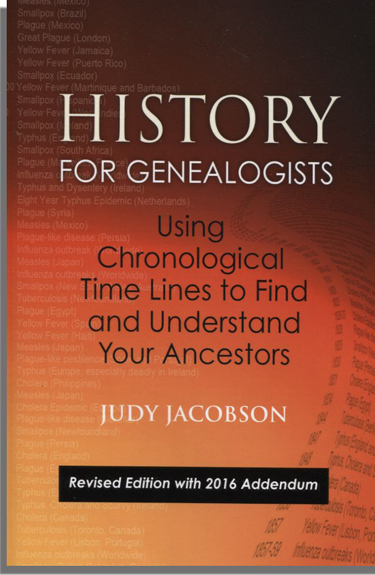As I create new family history photo books about my husband's maternal and paternal grandparents/great-grandparents, I'm doing a bit of research to provide historical, social, and economic context for their lives.
Two of my husband's Wood ancestors, father and son carpenters, were employed by a giant railroad in Toledo. In the 1880 city directory, paternal great-grandpa Thomas Haskell Wood (1809-1890) is listed as "coach builder, LS & MS R'y." His son, hubby's great uncle Alfred O. Wood (1855-1895), is listed as "carpenter, LS & MS R'y." Not everyone's occupation was listed with an employer--clearly this employer was important to the economy in Toledo, Ohio.
At top, you can see that Toledo, Ohio was a major center of the Lake Shore & Michigan South Railway (known as the LS&MS). Look at all the railroad lines feeding into it, at the western edge of Lake Erie (red circle). Lots of employment opportunities in a growth industry! This railway system evolved over the years.
McClure ancestors worked for railroads
Other men in hubby's family tree also worked in the railroad industry. According to the 1880 US Census for Wabash, Indiana, my husband's maternal great-grandpa William Madison McClure (1849-1887) worked for a railroad. In the 1900 Census for Wabash, William's son John N. McClure (1840-1919) was enumerated as an engineer for a railroad.
Another son of William, Brice Larimer McClure (1878-1970), hubby's maternal grandpa, also worked for a railroad, beginning about 1900. Family lore says he was a master mechanic for the Big Four, formed later than LS & MS and focused on travel in Ohio and the midwest.
Brice and his new bride (Floyda Mabel Steiner, 1878-1948), moved to Cleveland, Ohio in the middle of first decade of the 1900s. For at least a decade, they lived fairly close to the railyards there so he could easily commute to work. As a master mechanic with his own tools, he had his pick of jobs and worked in a variety of industries. In fact, he delayed retirement past the age of 65 to work during World War II, when his expertise was important to the war effort.
In my family history photo books, I'm going to summarize this interesting context in a few sentences plus include a map or two to inform descendants of how and where grandparents and great-grandparents made their living back in the day.



































